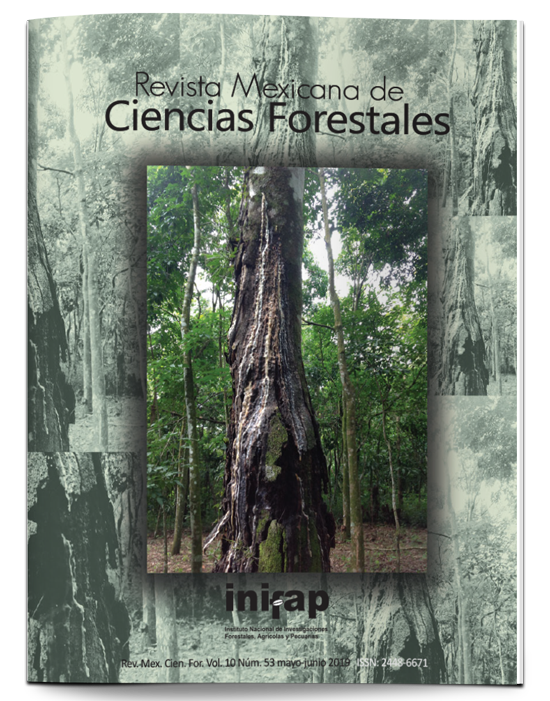Phytosanitary characterizaction of Quercus obtusata Bonpl., in a mountain cloud forest, Xicotepec, Puebla
DOI:
https://doi.org/10.29298/rmcf.v10i53.480Keywords:
Galls, mountain cloud forest, Cynipidae, oak, forest health, Quercus obtusata BonplAbstract
Cloud forests (CF) are part of the great diversity of plant communities in Mexico, covering around 10 % of the diversity that exists only in 5 % of the territory. Quercus is one of the most representative and abundant tree genera in montane cloud forests, and it is important because of the ecosystemic services that it provides. Despite its importance, few studies have focused on the phytosanitary status of this genus in CFs. The present study determines the types of pathogenic organisms affecting the phytosanitary status of Quercus obtusata, which is endemic to Mexico. In 2017, a quota sampling was carried out in three sites with different conservation degrees during the rainy and the dry seasons. The height and the diameter at breast height of each tree were measured; three branches were collected from each individual in order to analyze the organisms present on the leaves― and classified according to a scale of damage. The correspondence analysis evidenced a significant association (x2 p<0.001) between the variables sites and scale of damage, i.e. between the disturbed and intermediate sites and the more severe degrees of infection. During the dry season, the three sites exhibited a larger number of infected leaves. Mainly two types of gallwasps belonging to the genera Andricus and Kinseyella of the Cynipidae family were obtained, as well as various types of arthropods and defoliators.
Downloads
Published
How to Cite
Issue
Section
License
The authors who publish in Revista Mexicana de Ciencias Forestales accept the following conditions:
In accordance with copyright laws, Revista Mexicana de Ciencias Forestales recognizes and respects the authors’ moral right and ownership of property rights which will be transferred to the journal for dissemination in open access.
All the texts published by Revista Mexicana de Ciencias Forestales –with no exception– are distributed under a Creative Commons License Attribution-NonCommercial 4.0 International (CC BY-NC 4.0), which allows third parties to use the publication as long as the work’s authorship and its first publication in this journal are mentioned
The author(s) can enter into independent and additional contractual agreements for the nonexclusive distribution of the version of the article published in Revista Mexicana de Ciencias Forestales (for example, include it into an institutional repository or publish it in a book) as long as it is clearly and explicitly indicated that the work was published for the first time in Revista Mexicana de Ciencias Forestales.
For all the above, the authors shall send the form of Letter-transfer of Property Rights for the first publication duly filled in and signed by the author(s). This form must be sent as a PDF file to: ciencia.forestal2@inifap.gob.mx
This work is licensed under a Creative Commons Attribution-Noncommercial 4.0 International license.






